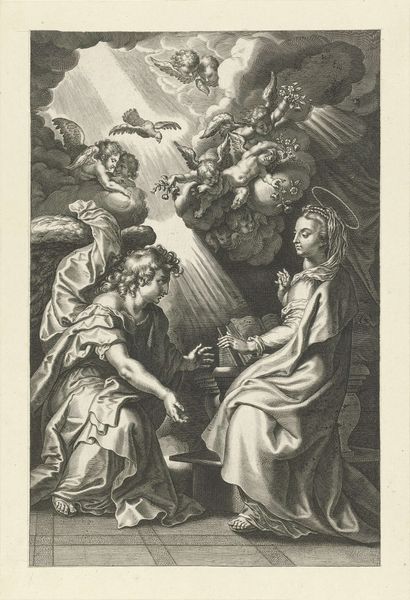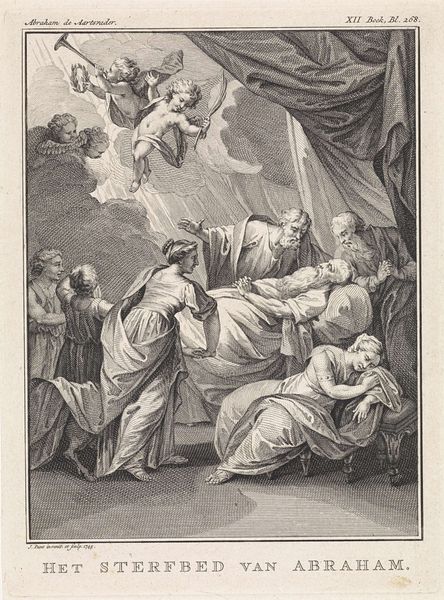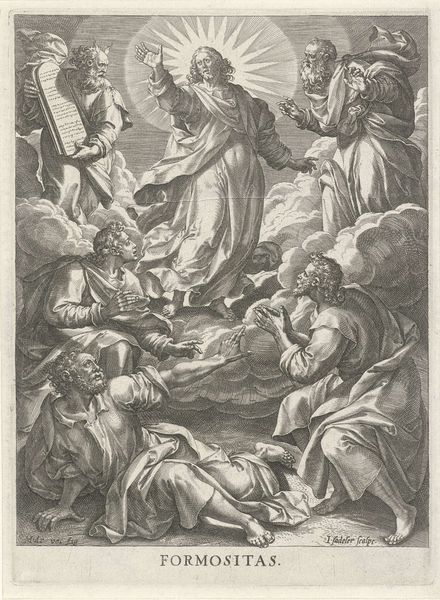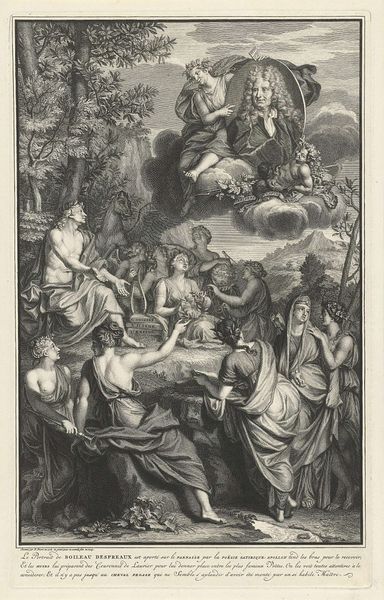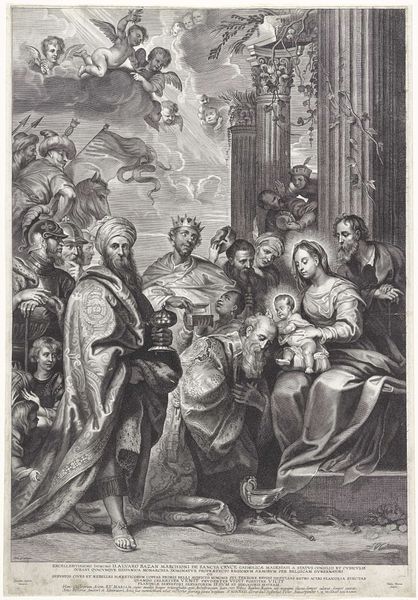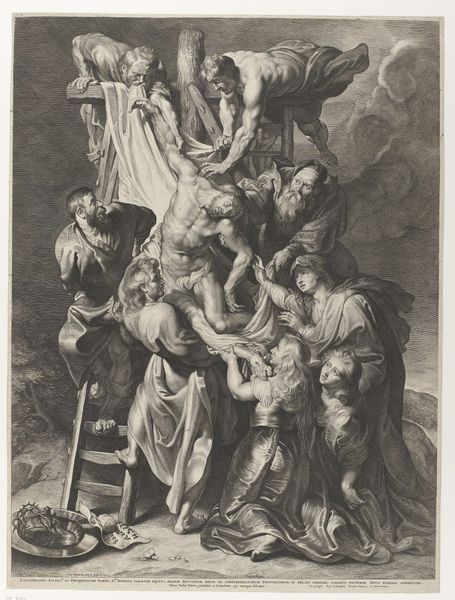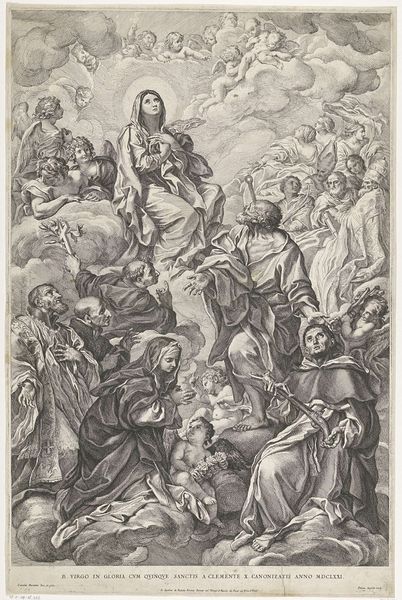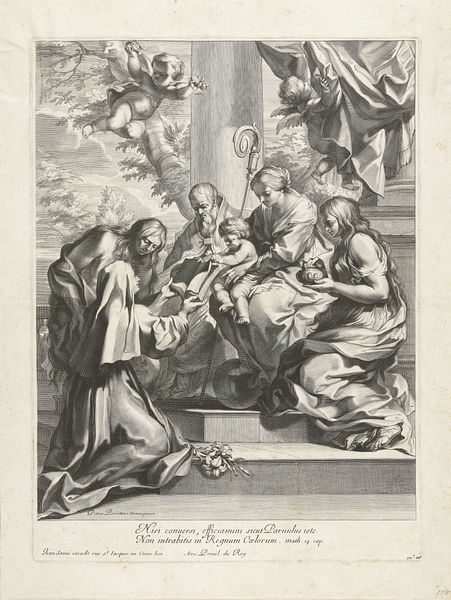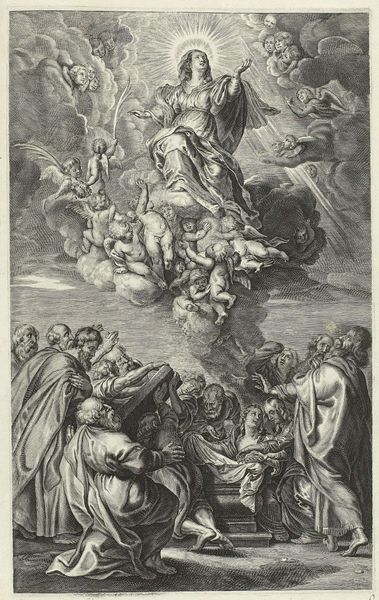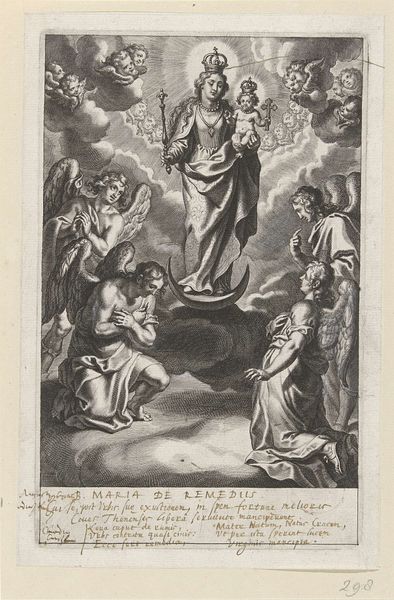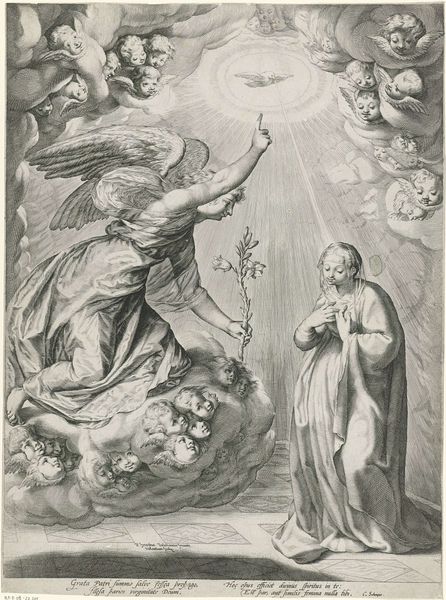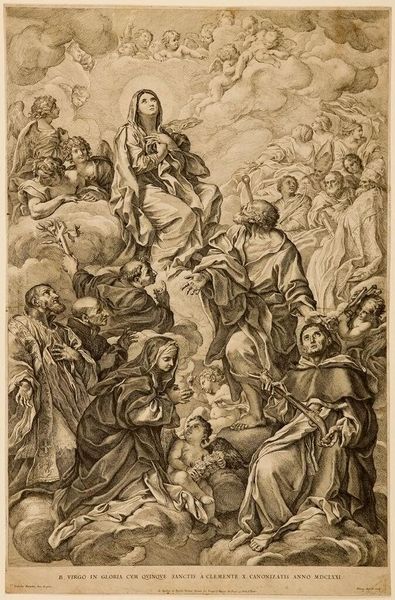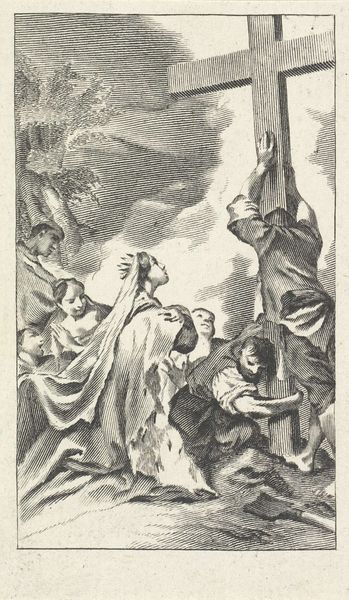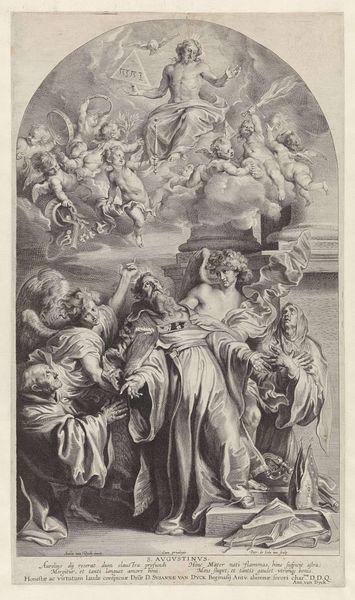
print, engraving
#
baroque
# print
#
old engraving style
#
figuration
#
history-painting
#
engraving
Dimensions: height 430 mm, width 308 mm
Copyright: Rijks Museum: Open Domain
Editor: This engraving, titled "Annunciatie," dating from sometime between 1633 and 1692 and attributed to Cornelis Bloemaert, has a very dramatic feel. I’m struck by the contrast between Mary’s quiet submission and the angel’s dynamic pose, not to mention the heavenly hosts swirling above. How do you interpret this work, especially considering its historical context? Curator: Well, looking at this piece, it's impossible to ignore how it functions within a power structure, right? The Annunciation isn’t simply a religious scene. Consider the concept of divine intervention and the limitations placed upon Mary’s agency, a young woman, who is expected to comply with a destiny chosen for her. How does the artist represent this delicate balance between acceptance and the surrender of autonomy? Does the Latin text offer a clue? Editor: The inscription includes, "Ecce ancilla Domini, fiat mihi secundum verbum tuum," or "Behold, I am the servant of the Lord; let it be to me according to your word." She does accept it. So is the artist making a statement about the patriarchal society? Curator: Perhaps. Bloemaert, working during the Baroque period, also exists within a complex web of patronage and religious expectation. To what extent does his portrayal reinforce or subtly question societal norms? I wonder, too, about the emphasis on light and dark – the divine light literally overshadowing Mary. Editor: It's like, a visual representation of being consumed by a higher power, where free will and power collide. Thank you! Curator: Exactly. And understanding that collision, between divine will and personal agency, helps us appreciate the layered meaning in this seemingly straightforward depiction of faith.
Comments
No comments
Be the first to comment and join the conversation on the ultimate creative platform.
